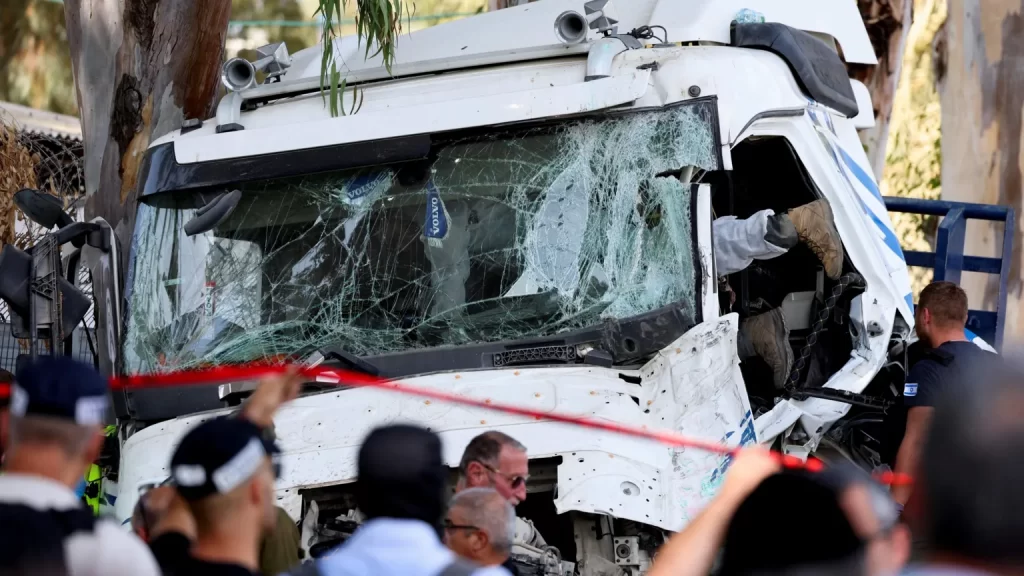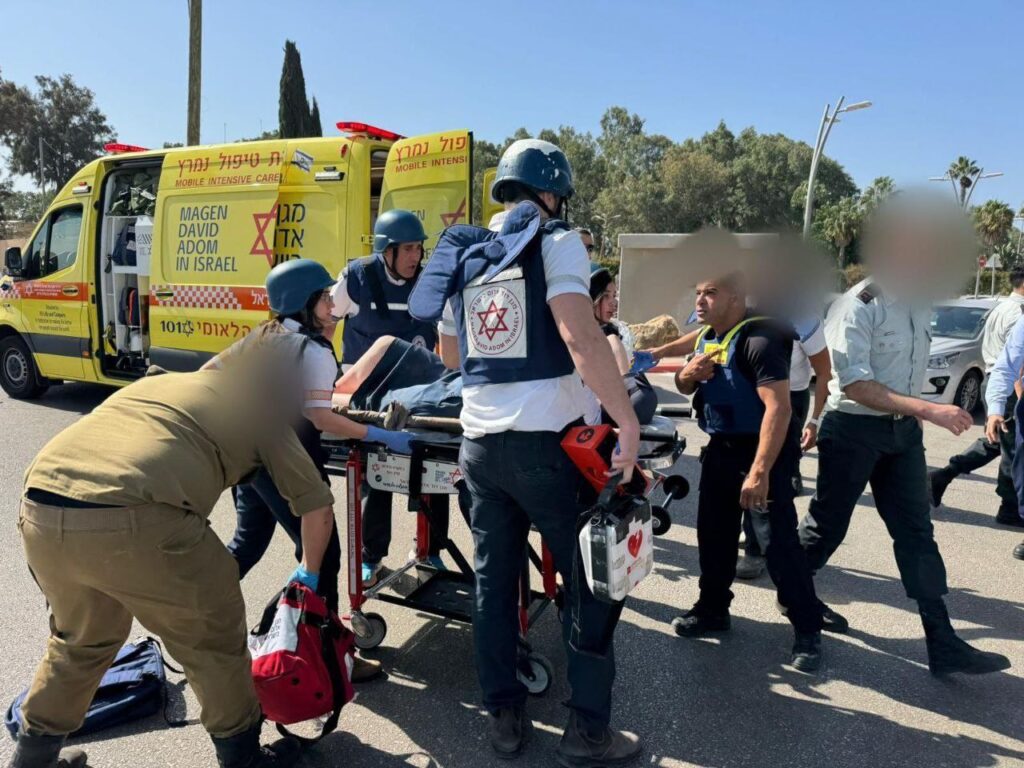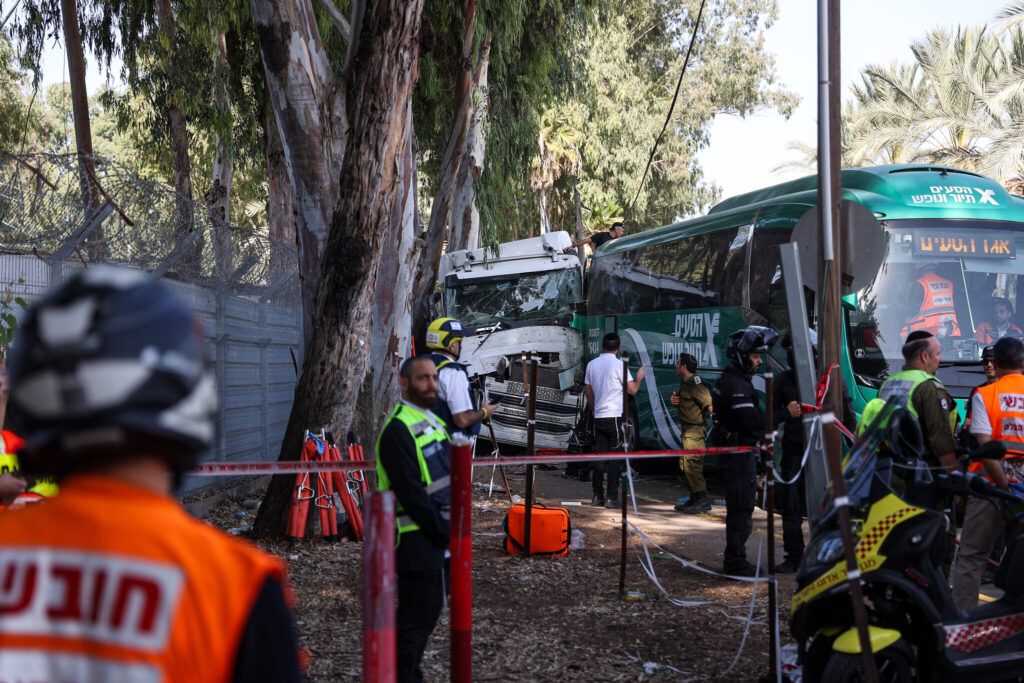A truck has collided with a bus stop near an Israeli military base in Glilot, just north of Tel Aviv, leaving dozens of people injured in what is believed to be a deliberate attack.

According to initial reports, at least six people are in serious condition, while others remain trapped under the wreckage at the scene. Emergency services are working to free those still caught in the debris and provide medical treatment to the injured.
Police have cordoned off the area as they investigate the circumstances surrounding the incident. However, local reports suggest that armed civilians in the vicinity shot and “neutralized” the driver of the truck after he allegedly intentionally rammed into the crowd.

Footage from Israeli television channels shows a chaotic scene, with emergency personnel tending to the wounded and a helicopter hovering overhead. The incident has sparked concern and outrage among the public, with many demanding a thorough investigation into the attack.
Israel’s emergency services, Magen David Adom (MDA), released a statement confirming the incident: “At 10:08 AM, a report was received in MDA’s 101 Emergency Call Center in the Yarkon Region of a truck hitting a bus stop on Aharon Yariv Boulevard in Ramat Hasharon. MDA EMTs and Paramedics are currently providing medical treatment on site to dozens of casualties.”

A spokesman for Israel’s ambulance service, quoted by the Israeli newspaper Haaretz, revealed that many of the injured were elderly citizens who had just disembarked from a bus before a planned visit to the nearby Israel Defense Forces (IDF) base in Glilot.
The attack has raised questions about security measures in the area, particularly given the proximity to a military installation. Authorities have not yet released any information about the identity of the driver or their potential motives.
As the situation continues to unfold, the focus remains on providing urgent medical care to the injured and ensuring the safety of those in the vicinity. The incident is likely to heighten tensions in the region and prompt a thorough review of security protocols around sensitive locations.



